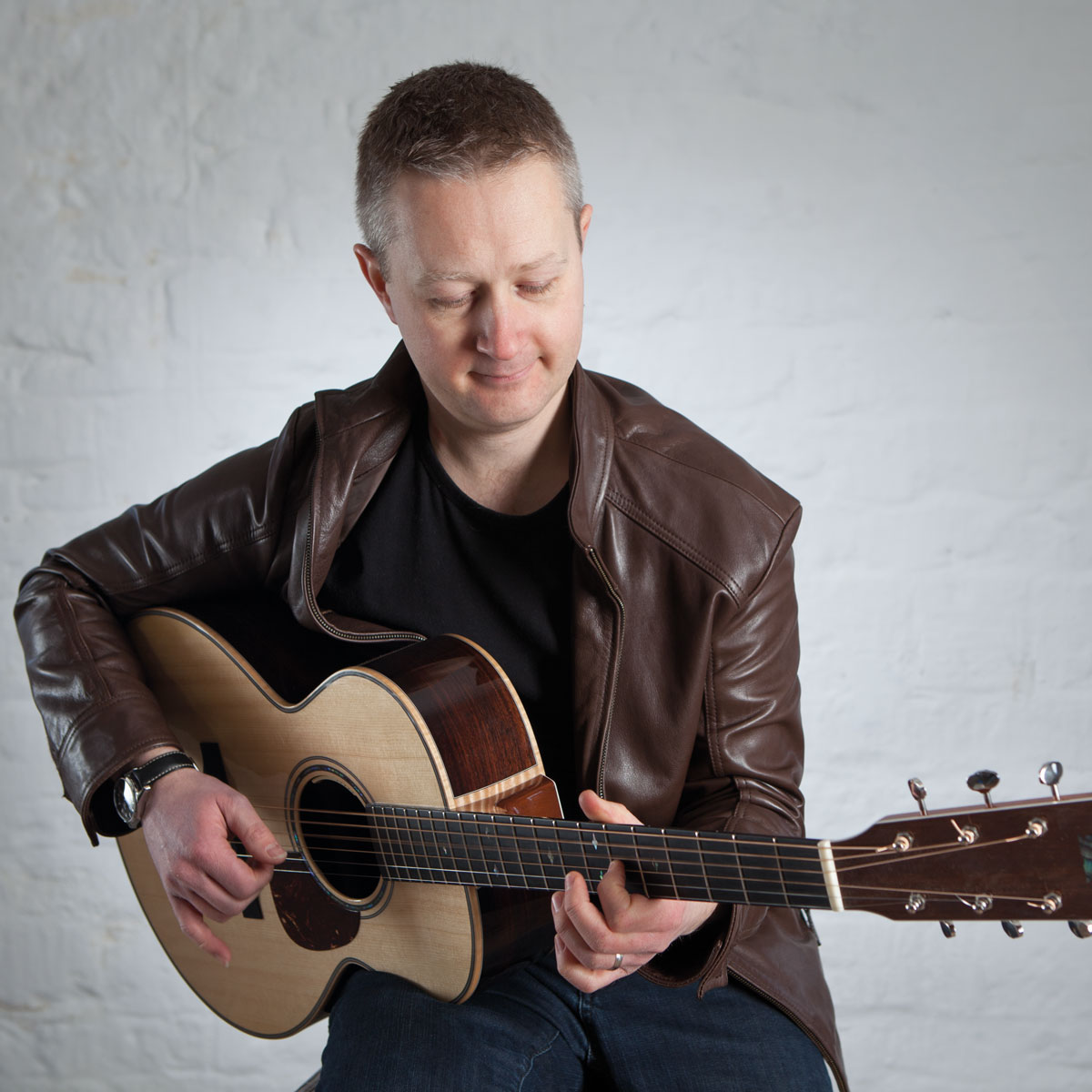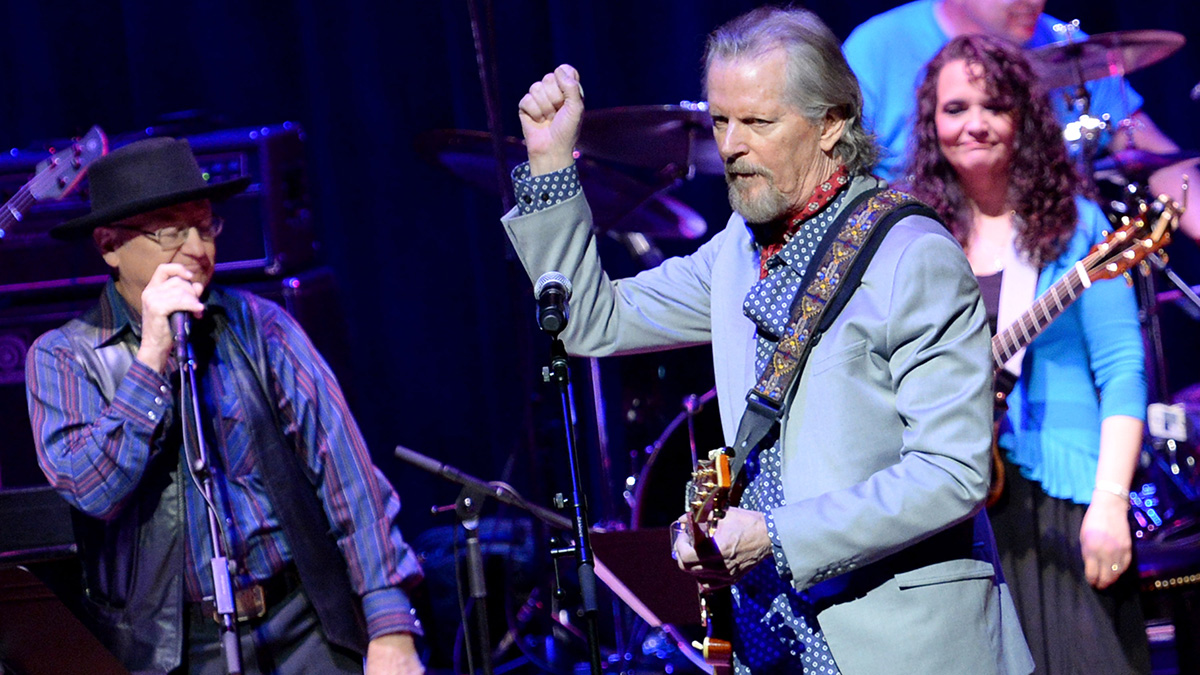Ed Sheeran isn’t just a fingerpicker or a strummer – his ‘guitar orchestra’ approach sells out stadiums. Here’s how he does it
Sheeran is proof you can become a megastar with only an acoustic, a looper pedal, and, oh, a ton of talent. Here, we’re going to workshop your DADGAD fingerstyle chops so you’re stadium-ready, too

To some, Ed Sheeran is merely a pop star who wields a small-sized acoustic guitar. However, dig into Sheeran’s playing and you’ll discover a creative artist who works in an array of tunings and creates complex layered parts through his sophisticated use of a looper pedal.
What’s more, Sheeran has dug deep into the world of fingerstyle and percussive guitar, spending time studying with altered tuning and percussive wizard Preston Reed when Sheeran was just a teenager.
One of the world’s most successful artists, Sheeran is refreshingly creative in what can be an otherwise stale pop world. Sheeran was interested in music from a young age, singing in a church choir from age four, then taking up guitar at 11.
By his teenage years he was working with the National Youth Theatre and by 13 he had started releasing his own music. Sheeran began to perform live as much as possible and like many artists of his generation he used YouTube to get his music out to a wider listening audience.
This drew attention and praise from Elton John among others. In the past 15 years or so, Sheeran has attained a staggering level of success and has opened for The Rolling Stones, performed onstage with John Mayer and recorded with Eminem among many other impressive collaborations.
Sheeran’s style is best described as multi-faceted. Many singer-songwriters will alight on fingerpicking or strumming when accompanying themselves, but Sheeran takes more of a ‘guitar orchestra’ approach to the instrument. When performing live he will layer parts, typically starting with a percussive foundation followed by a bass riff, a melodic idea and then a supporting chordal pattern to accompany his voice.
The results are often breathtaking, and while many dismiss looping it’s actually an art form within itself – get the timing skewed or hit the wrong note and you are stuck with it for the duration of the track. And how many other artists can enthral a packed O2 Arena with just a little acoustic guitar and a pedal?
In this lesson, we’ll take a look at individual elements of Sheeran’s style to see how he uses rich chord voicings, percussive basslines and intricate fingerpicking. Sometimes these will form parts of a looped sequence while at other times they are performed alone to accompany his vocals.
In addition, we’ll see how Sheeran uses DADGAD tuning to create riff-based and melodic chord patterns that breathe life into standard songwriting chord progressions.
When studying an artist like Sheeran, it’s best to approach each element separately, so you can hone the techniques to the point where you can shift between them with ease, as he does. You can play most of these examples with a pick, but Ed will typically approach things fingerstyle, be that picking individual notes or strumming chords.
Get the tone
Ed Sheeran favours small-bodied guitars, possibly because, when building up looped layers, the big sound of a dreadnought could create too much low-end build-up, so a guitar like Ed’s makes sense for his style. For many years he played a Martin Ed Sheeran X signature guitar but these days he’s mostly seen with his own range of Sheeran by Lowden models.
Example 1
Ed Sheeran often eschews standard chord voicings in his writing for more colourful parts like this. Note the use of dynamics to emphasise beat one and the ‘and’ of beat two.
To play this part use the thumb, first and second fingers on the picking, and be constantly aware of digging in on those points of emphasis. This in itself is a great exercise as it really makes you aware of the dynamic range of the picking hand, and how it works with your particular guitar.
Example 2
Tight rhythmic playing is another facet of Sheeran’s style, and playing solo as he often does makes him think rather like a drummer, being aware of where to use space and where to be more busy – listen to Ed playing and you can hear where the kick drum, snare, and hi-hat would sit.
This type of playing shows how he’ll set up a groove which could then act as a foundation for a looped part. The chords are simple but you’ll need to mute the strings with the picking hand after playing them.
You can play this with part with a plectrum, but Sheeran will usually strum with the first finger or a combination of fingers on a part like this.
Example 3
Basslines are a core part of Sheeran’s loops, and he will inject percussive elements into them.
Play these notes with a light palm mute picking them with the thumb; to sound the muted parts (indicated by an ‘X’) release the palm mute and then strike the string with the picking-hand thumb after releasing the pressure on the fretted note, but still keeping the finger on the string to ensure the muted strike is clean. If you have a looper pedal, try this part and see what you can lay over it.
Example 4
We are more in the realm of conventional fingerpicking here but make sure you pay attention to the 6/8 time signature. The chords are pretty straightforward, albeit with some occasional colour added.
The picking-hand thumb can take care of the sixth, fifth and fourth strings while the first and second fingers can look after the third and second strings respectively. Again, think about the dynamics and volume levels between your thumb and fingers.
Example 5
Sheeran uses DADGAD technique as an effective songwriting and accompaniment tool. In this example he can take a straightforward VI-IV-I chord progression beloved of many songwriters and inject plenty of colour and harmonic interest, courtesy of DADGAD tuning.
Indeed, check out how sparse the fretted notes are and you’ll see how much work the DADGAD sound is doing in this example. Have you tried DADGAD? If not, why not?
Example 6
This longer DADGAD piece shows how Sheeran uses the tuning to create simple melodic parts that can be filled out with the open strings and moving basslines. From bar 5 chunky palm-muted chords and open strings give a much bigger sound when compared with a similar progression in standard tuning.
Get The Pick Newsletter
All the latest guitar news, interviews, lessons, reviews, deals and more, direct to your inbox!
Stuart Ryan is best known for his acoustic guitar playing, from Celtic fingerpicking and traditional folk to modern percussive phrasing and fresh interpretations of popular pieces. He has released several solo albums, written pieces for UK examination boards and created nine tutorial books ranging from acoustic guitar arrangements to Americana styles.











